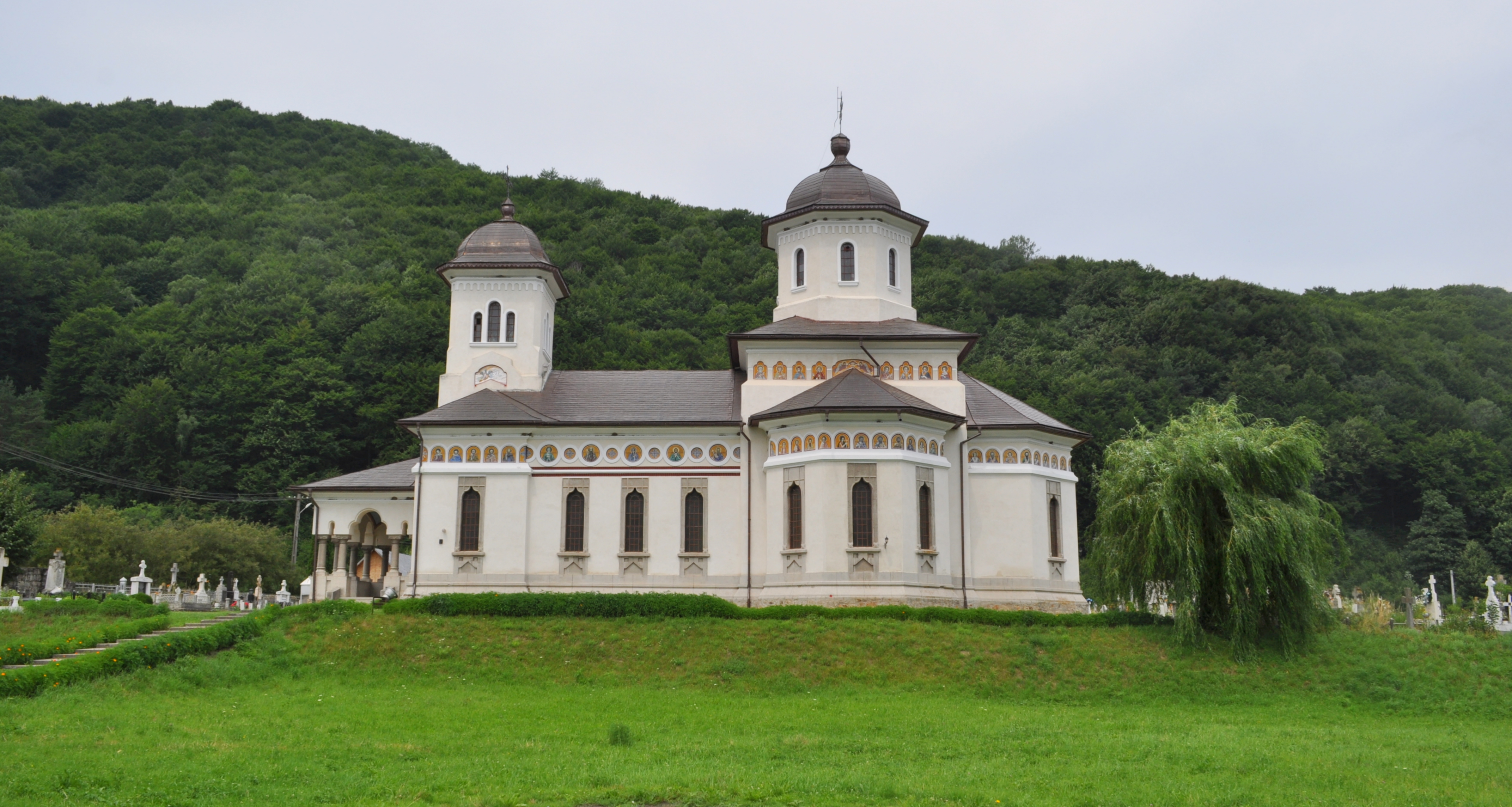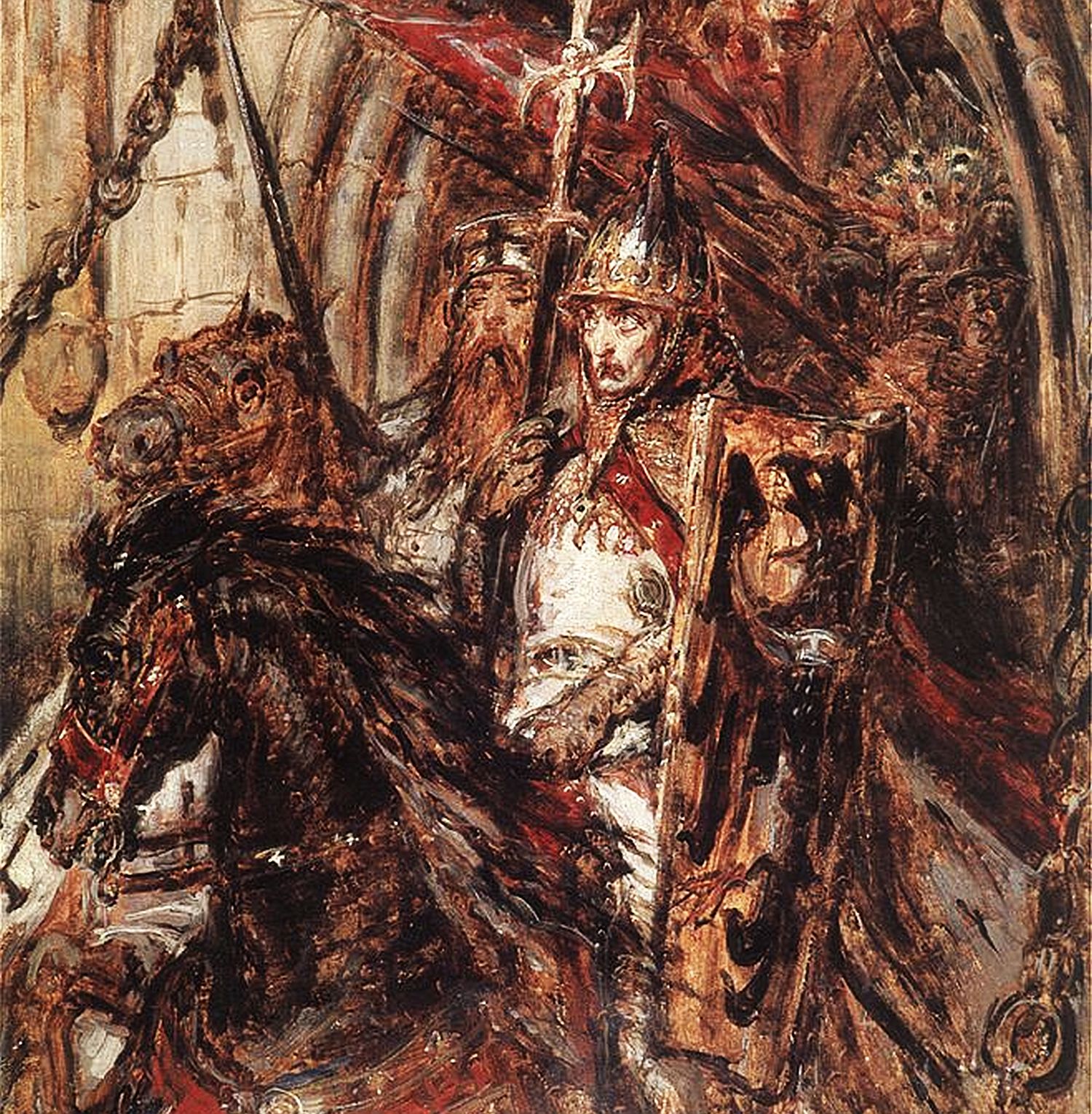|
Pousa, Son Of Sólyom
Pousa, son of Sólyom (; died 31 March 1241) was a Hungarian nobleman, who served as voivode of Transylvania twice, in 1227 and 1235 to 1241.Engel 2001, p. 381.Zsoldos 2011, p. 38. Pousa served as ispán (''comes'') of Vas County in 1225.Zsoldos 2011, p. 223. During the reign of Andrew II, he was a faithful supporter of crown prince Béla, who held the title of Duke of Transylvania after 1226, following the agreement between the king and his son after a series of conflicts for the throne. Sometime Duke Béla acted independently of his father, as it is demonstrated by his grant of tax exemption to Transylvanian knights in 1231 and by his donation of lands situated in Wallachia in 1233. Pousa served as master of the treasury (''camerarius'') for Béla in 1225.Zsoldos 2011, p. 74. He was appointed voivode of Transylvania in 1227. According to László Markó, he held the office between 1226 and 1229, however existing charters only prove the term of voivodeship in 1227.Markó 2006, p ... [...More Info...] [...Related Items...] OR: [Wikipedia] [Google] [Baidu] |
Voivode Of Transylvania
The Voivode of Transylvania (;Fallenbüchl 1988, p. 77. ;Zsoldos 2011, p. 36. ; ) was the highest-ranking official in Transylvania within the Kingdom of Hungary from the 12th century to the 16th century. Appointed by the King of Hungary, monarchs, the voivodesthemselves also the heads or ''ispáns'' of Fehér County (former), Fehér Countywere the superiors of the ''ispáns'' of all the other County (Kingdom of Hungary), counties in the province. They had wide-ranging administrative, military and judicial powers, but their jurisdiction never covered the whole province. The Transylvanian Saxons, Saxon and Székelys, Székely communitiesorganized into their own districts or "Seat (territorial-administrative unit), seats" from the 13th centurywere independent of the voivodes. The kings also exempted some Transylvanian towns and villages from their authority over the centuries. Even so, the Voivodeship of Transylvania "was the largest single administrative entity"Je ... [...More Info...] [...Related Items...] OR: [Wikipedia] [Google] [Baidu] |
Wallachia
Wallachia or Walachia (; ; : , : ) is a historical and geographical region of modern-day Romania. It is situated north of the Lower Danube and south of the Southern Carpathians. Wallachia was traditionally divided into two sections, Muntenia (Greater Wallachia) and Oltenia (Lesser Wallachia). Dobruja could sometimes be considered a third section due to its proximity and brief rule over it. Wallachia as a whole is sometimes referred to as Muntenia through identification with the larger of the two traditional sections. Wallachia was founded as a principality in the early 14th century by Basarab I after a rebellion against Charles I of Hungary, although the first mention of the territory of Wallachia west of the river Olt dates to a charter given to the voivode Seneslau in 1246 by Béla IV of Hungary. In 1417, Wallachia was forced to accept the suzerainty of the Ottoman Empire; this lasted until the 19th century. In 1859, Wallachia united with Moldavia to form the Un ... [...More Info...] [...Related Items...] OR: [Wikipedia] [Google] [Baidu] |
13th-century Hungarian Nobility
The 13th century was the century which lasted from January 1, 1201 (represented by the Roman numerals MCCI) through December 31, 1300 (MCCC) in accordance with the Julian calendar. The Mongol Empire was founded by Genghis Khan, which stretched from Eastern Asia to Eastern Europe. The conquests of Hulagu Khan and other Mongol invasions changed the course of the Muslim world, most notably the Siege of Baghdad (1258) and the destruction of the House of Wisdom. Other Muslim powers such as the Mali Empire and Delhi Sultanate conquered large parts of West Africa and the Indian subcontinent, while Buddhism witnessed a decline through the conquest led by Bakhtiyar Khilji. The earliest Islamic states in Southeast Asia formed during this century, most notably Samudera Pasai. The Kingdoms of Sukhothai and Hanthawaddy would emerge and go on to dominate their surrounding territories. Europe entered the apex of the High Middle Ages, characterized by rapid legal, cultural, and religious evol ... [...More Info...] [...Related Items...] OR: [Wikipedia] [Google] [Baidu] |
Hungarian Military Personnel Killed In The Mongol Invasion Of Europe
Hungarian may refer to: * Hungary, a country in Central Europe * Kingdom of Hungary, state of Hungary, existing between 1000 and 1946 * Hungarians/Magyars, ethnic groups in Hungary * Hungarian algorithm, a polynomial time algorithm for solving the assignment problem * Hungarian language, a Uralic language spoken in Hungary and all neighbouring countries * Hungarian notation, a naming convention in computer programming * Hungarian cuisine Hungarian or Magyar cuisine (Hungarian language, Hungarian: ''Magyar konyha'') is the cuisine characteristic of the nation of Hungary, and its primary ethnic group, the Hungarians, Magyars. Hungarian cuisine has been described as being the P ..., the cuisine of Hungary and the Hungarians See also * * {{disambiguation Language and nationality disambiguation pages ... [...More Info...] [...Related Items...] OR: [Wikipedia] [Google] [Baidu] |
Voivodes Of Transylvania
Voivode ( ), also spelled voivod, voievod or voevod and also known as vaivode ( ), voivoda, vojvoda, vaivada or wojewoda, is a title denoting a military leader or warlord in Central, Southeastern and Eastern Europe in use since the Early Middle Ages. It primarily referred to the medieval rulers of the Romanian-inhabited states and of governors and military commanders of Poles, Hungarian, Lithuanian, Balkan, Russian people and other Slavic-speaking populations. In the Polish-Lithuanian Commonwealth, ''voivode'' was interchangeably used with ''palatine''. In the Tsardom of Russia, a voivode was a military governor. Among the Danube principalities, ''voivode'' was considered a princely title. Etymology The term ''voivode'' comes from two roots. , means "war, fight," while , means "leading", thus in Old Slavic together meaning "war leader" or "warlord". The Latin translation is for the principal commander of a military force, serving as a deputy for the monarch. In ear ... [...More Info...] [...Related Items...] OR: [Wikipedia] [Google] [Baidu] |
1241 Deaths
Year 1241 ( MCCXLI) was a common year starting on Tuesday of the Julian calendar. Events * March 18 – Battle of Chmielnik ( Mongol invasion of Poland): The Mongols overwhelm the feudal Polish armies of Sandomierz and Kraków provinces, and plunder the abandoned city of Kraków. * April 9 – Battle of Legnica: The Mongols, under the command of Baidar, Kadan and Orda Khan, defeat the feudal Polish nobility, including the Knights Templar. * April 11 – Battle of Mohi: Batu Khan and Subutai defeat Béla IV of Hungary. The battle is the last major event in the Mongol Invasion of Europe. * May – Battle of Giglio: an Imperial fleet defeats a Genoan fleet in the Tyrrhenian Sea. * May 10 – Battle of Cameirge in Ulster: The Milesian Irish septs of the Ó Dónaills from Donegal, the Ó Néills from Armagh and the Ó Dochartaighs of Connacht defeat the last Tuatha Dé Danann sept, the Meic Lochlainn of Tír Eoghain and Inishowen under Domhnall mac M ... [...More Info...] [...Related Items...] OR: [Wikipedia] [Google] [Baidu] |
Kingdom Of Hungary (1538–1867)
The Kingdom of Hungary was a monarchy in Central Europe that existed for nearly a millennium, from 1000 to 1946 and was a key part of the Habsburg monarchy from 1526-1918. The Principality of Hungary emerged as a Christian kingdom upon the coronation of the first king Stephen I at Esztergom around the year 1000;Kristó Gyula – Barta János – Gergely Jenő: Magyarország története előidőktől 2000-ig (History of Hungary from the prehistory to 2000), Pannonica Kiadó, Budapest, 2002, , pp. 37, 113, 678 ("Magyarország a 12. század második felére jelentős európai tényezővé, középhatalommá vált."/"By the 12th century Hungary became an important European factor, became a middle power.", "A Nyugat részévé vált Magyarország.../Hungary became part of the West"), pp. 616–644 his family (the Árpád dynasty) led the monarchy for 300 years. By the 12th century, the kingdom became a European power. Due to the Ottoman occupation of the central and southern t ... [...More Info...] [...Related Items...] OR: [Wikipedia] [Google] [Baidu] |
Oituz
Oituz (formerly ''Grozești''; ) is a commune in Bacău County, Western Moldavia, Romania. It is composed of six villages: Călcâi (''Zöldlonka''), Ferestrău-Oituz (''Fűrészfalva''), Hârja (''Herzsa''), Marginea, Oituz and Poiana Sărată (''Sósmező''). Oituz was the site of three battles during the Romania during World War I, First World War: the First Battle of Oituz, First, Second Battle of Oituz, Second, and the Third Battle of Oituz. According to Iorgu Iordan, the commune's name is of Turkic languages, Turkic origin; ''otuz'' or ''oltuz'' means "thirty" in some Turkic languages. Poiana Sărată village is part of Transylvania;''Memoriile Secțiilor Științifice'', Romanian Academy, series IV, vol. XXVII, p.171. in Austria-Hungary, it belonged to Háromszék County, and after a reorganization to Trei Scaune County in Romania until 1950. Demographics At the 2002 census, 99.8% of inhabitants were Romanians, ethnic Romanians and 0.2% Hungarians. 49.2% were Romanian Ort ... [...More Info...] [...Related Items...] OR: [Wikipedia] [Google] [Baidu] |
Güyük Khan
Güyük Khan or Güyüg Khagan, mononymously Güyüg ( 19 March 1206 – 20 April 1248), was the third Khagan of the Mongol Empire, the eldest son of Ögedei Khan and a grandson of Genghis Khan. He reigned from 1246 to 1248. He started his military career by participating in the Mongol conquest of Eastern Xia, conquest of Eastern Xia in China and later in the Mongol invasion of Europe, invasion of Europe. When his father died, he was enthroned as Khagan in 1246. During his almost two year reign, he reversed some of his mother's unpopular edicts and ordered an empire-wide census; he also held some authority in Eastern Europe, appointing Andrey II of Vladimir, Andrey II as the Grand Prince of Vladimir, grand prince of Vladimir and giving the Grand Prince of Kiev, princely title of Kiev to Alexander Nevsky. Early life Güyük received military training and served as an officer under his grandfather Genghis Khan and later his father Ögedei Khan (after the death of Genghis in 1227) ... [...More Info...] [...Related Items...] OR: [Wikipedia] [Google] [Baidu] |
Mongol Invasion Of Europe
From the 1220s to the 1240s, the Mongol Empire, Mongols conquered the Turkic peoples, Turkic states of Volga Bulgaria, Cumania and Iranian peoples, Iranian state of Alania, and various principalities in Eastern Europe. Following this, they began their invasion into Central Europe by launching a two-pronged invasion of History of Poland during the Piast dynasty, then-fragmented Poland, culminating in the Battle of Legnica (9 April 1241), and the Kingdom of Hungary (1000–1301), Kingdom of Hungary, culminating in the Battle of Mohi (11 April 1241). Invasions were also launched into the Caucasus against the Kingdom of Georgia, the Chechens, the Ingush people, Ingush, and Circassia though they Mongol invasion of Circassia, failed to fully subjugate the latter. More invasions were launched in Southeast Europe against Second Bulgarian Empire, Bulgaria, Croatia in personal union with Hungary, Croatia, and the Latin Empire. The operations were planned by General Subutai (1175–1248) and ... [...More Info...] [...Related Items...] OR: [Wikipedia] [Google] [Baidu] |
Master Of The Treasury
The master of the treasury or treasurerSegeš 2002, p. 316.Rady 2000, p. 113. (Fallenbüchl 1988, p. 80. or , ,Zsoldos 2011, p. 61. , or , )General Encyclopedia of the Yugoslav Lexicographical Institute, second edition, sixth volume SKA-ŽV. p 336 was a royal official in the Kingdom of Hungary from the 12th century. Although treasurers were initially responsible for collecting and administering royal revenues, they adopted more and more judiciary functions and turned into the highest judges of the realm. From the 14th century, treasurers presided over the court of appeals for a group of the free royal cities, including Buda, Bártfa, Eperjes, Kassa, Nagyszombat and Pressburg (Pozsony) (today Bardejov, Prešov, Košice, Trnava and Bratislava in Slovakia). The name is derived from the Slavic languages, Slavic word ''tovor'' ("casket", "strong-box"). Middle Ages Initially, the treasurer (taverník) was the administrator of the royal treasury (i.e. the financial manager of ... [...More Info...] [...Related Items...] OR: [Wikipedia] [Google] [Baidu] |






